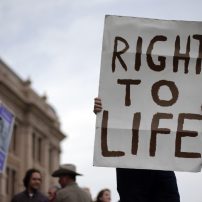
Prisoner suicide. Failure to take precautionary measures to protect a prisoner with suicidal tendencies. Violation of the right to life
JUDGMENT
Frick v. Switzerland 30.06.2020 (app. no. 23405/16)
SUMMARY
Prisoner suicide. Failure to take precautionary measures to protect the right to life.
Failure to prevent suicide committed in an unusual way by a vulnerable detainee in a police cell, in which he had been placed alone and unattended for 40 minutes. According to the ECtHR, the authorities could, with a reasonable and not excessive effort, mitigate the risk of suicide of the applicant’s son, a risk which they knew or should have known. The responsibility of the authorities lies in the treatment of the detainee as a person capable of withstanding stress and pressure, without paying sufficient attention to his personal situation and suicidal tendencies.
Violation of the essential aspect of Article 2 (right to life) of the ECHR.
Non-prosecution. The ECtHR ruled that the way in which the Swiss criminal justice system responded to the credible allegation of a breach of Article 2 in view of the situation of a person who had expressed clear and recurring suicidal tendencies did not make it possible for public authorities to take full responsibility for their role. in these events.
Violation of the procedural aspect of Article 2 (investigation) of the ECHR.
The ECtHR awarded € 5,796 in damages, € 50,000 in non-pecuniary damage and € 22,307 in costs.
PROVISION
Article 2
PRINCIPAL FACTS
The applicant, Sonja Frick, is a Swiss national born in 1956 and lives in Berikon.
The case concerned the alleged failure of the State to protect the life of the applicant’s son, who had committed suicide in a police cell, and the State’s duty to effectively investigate the circumstances of his death.
On Sunday, 28 September 2014, at approximately 9 pm in Birmensdorf (Canton of Zurich), the applicant’s son, D.F., 40, had been involved in a car accident while driving a car belonging to his employer. He was under the influence of alcohol and drugs. He was not seriously injured and did not cause harm to third parties.
In order to prepare their report, the police officers who were sent to the scene of the accident decided to include in the proceedings Ms. Frick, who had been summoned by her son and in the meantime also arrived at the scene of the accident.
It was deemed necessary to take blood and urine samples from the D.F. for evidentiary purposes. The two officers took him to a hospital, where they were met by Ms. Frick, who had followed them in her own car. At the hospital, after being informed of the need for further examinations, her son began to look much more upset.
About 10.50 p.m. A police officer called the Zurich Police Traffic Management Center from the hospital, informing him that a doctor had to be sent to the Urdorf motorway police station because D.F., who was to be transported there, had expressed suicidal tendencies.
About 11.15 p.m. D.F. arrived at the police station with the two officers and the applicant.
At the center, police decided to transfer D.F. in a cell located in the basement of the police station. He started protesting violently about his confinement in the cell and tried to escape.
Following the transfer of D.F. in his cell by the police by force, the latter finally managed to persuade him to stay there until the doctor arrived.
About 00.35 a.m. the doctor who had been called arrived at the police station of the highway. He decided to postpone his visit to D.F.’s cell. until police reinforcements arrive. At 01.05 am, when the other police officers had arrived at the police station, the doctor, accompanied by police officers, visited him in his cell, where he was found hanging with the crotch of his jeans, which he was wearing from a ventilation grille.
Police and doctors testified as part of the preliminary police investigation. The Supreme Court of Canton with a decision of 30 April 2015 refused to initiate criminal proceedings for lack of evidence of a criminal offense. The court found that there was no evidence to suggest that the police officers involved in the events that led to D.F.’s suicide. had violated their duties.
Ms Frick has appealed to the Federal Court against this decision. The Federal Court rejected the appeal. He did not consider that there was any negligence regarding the transfer of D.F. at the police department. He also considered that the decision to place D.F. in a cell was justified because of his aggression and his overall behavior. The court ruled that the lower court did not violate federal law by refusing to prosecute police officers for homicide.
Based on Article 2 (right to life), the applicant argued that the authorities had failed in their positive obligation to take precautionary measures to protect their son from himself. It considered that the investigations carried out by the authorities did not meet the requirements of Article 2.
THE DECISION OF THE COURT…
Article 2 (substantive aspect)
a) Knowledge of the principles regarding the risk of suicide and the particular vulnerability of D.F.
At the scene of the accident, Officer A.S. he immediately discussed D.F. suicidal tendencies with the applicant and took action. Officer C.R. at the police station had been informed of the suicidal tendencies of D.F.
D.F. showed from the first contact with the police an unusual behavior, emotionally dependent on his mother, being in a situation that terrified him. He had caused an accident while under the influence of alcohol and drugs. In addition, the possibility of detention under supervision was discussed. Finally, at the police station, D.F. was placed alone in a cell.
However, in its autopsy report, the Forensic Medicine Institute (IRMZ) stated that his placement in solitary confinement, with “current” suicidal tendencies, past suicide attempts and the “alcohol problem”, were risk factors associated with suicides in custody and that at least two of these factors were present in the case of DF.
The authorities knew or should have known, then, that D.F. he was in danger of committing suicide and that this was a clear and immediate danger to his life. In addition the authorities had enough information and were aware of the particular vulnerability of D.F. The authorities should therefore have concluded that clearly close monitoring was needed.
b) Failure to take the necessary measures to address the risk of suicide
The police carried out the usual security and prevention measures in the cell, removing, among other things, his shoes, his leather belt and a chain of the detainee, so that there are no objects through which he could be strangled or hurt himself. in any other way. But D.F. committed suicide in an unusual way. However, there were five officers in the department and D.F. would be possible in the presence of the applicant, who was in an office. In addition, the proposed transfer of D.F. in a cell equipped with a CCTV / video surveillance system was never pursued by the police.
Authorities should not have let D.F. alone in an unattended cell for 40 minutes. The authorities could, with a reasonable and not excessive effort, mitigate the risk of suicide, a risk they knew or should have known. The responsibility of the authorities lies with the treatment of D.F. as a person able to withstand the stress and pressures he suffered, without paying sufficient attention to his personal situation. Regardless of whether or not the police officers acted in accordance with the rules in force in such a situation, by not recognizing him as a person requiring special treatment, the responsibility shifted to the State under the Convention.
The ECtHR therefore held that the substantive aspect of Article 2 (right to life) had been violated.
Article 2 (procedural aspect)
According to the Federal Court, there had to be “minimal evidence” of unlawful conduct in order for the Supreme Court to authorize the initiation of criminal proceedings. Such permission requires the possibility of less criminal liability than is required to initiate an investigation. This is even more true for serious crimes, especially if the criminal case is related to the death of a person.
In examining the substance of Article 2, the Court found that the authorities were responsible for the breach of the right to life of the applicant’s son.
Neither the Supreme Court nor the Federal Court relied on the Forensic Institute’s autopsy report citing risk factors associated with suicides during detention, and in particular did not take into account comments on the two criteria met in the case of D.F.
The Forensic Institute also said it would be better to call a psychiatrist rather than a doctor. The Federal Court rejected the applicant ‘s argument in that regard, considering that his capacity as a doctor was irrelevant, since that doctor had arrived after DF’ s death. The Court found that the applicant’s allegation was convincing, that is, that a psychiatrist could have given precise instructions to the police over the telephone to reduce or even eliminate the risk of suicide. In this context, the Federal Supreme Court ruled that the allegation was irrelevant, as there was never direct contact between the police and the emergency physician. However, it is up to the Contracting States to organize their services and train their staff in such a way as to enable them to meet the requirements of the Convention.
Finally, the minutes of the 2011 meeting of the State Council of the canton suggest that a person showing suicidal tendencies be placed in a double cell or, if circumstances so require, be monitored continuously. In addition, it seems that calling an emergency psychiatrist, even if it does not preclude calling an emergency doctor in some cases, favors these situations. These two recommendations were not followed in this case.
The ECtHR is therefore not convinced that there was no “minimal evidence” of punitive conduct on the part of those involved in the events leading up to DF’s death, and how the Swiss criminal justice system responded to the credible allegation of a violation of Article 2 In view of the situation of a person who has expressed clear and recurring suicidal tendencies, it has not been possible for the state authorities to take full responsibility for their role in these events. Consequently, the current system has not guaranteed the effective application of the provisions of domestic law, ensuring respect for the right to life, in particular the deterrent function of criminal law.
Consequently, there was an absence, given the particularly vulnerable condition of the applicant’s son, of adequate protection “by law”, capable of safeguarding the right to life, as well as of preventing similar life-threatening actions in the future.
Therefore, it was considered that there was a violation of the procedural aspect (investigation) of Article 2 (right to life).
Just satisfaction: The ECtHR awarded € 5,796 in damages, € 50,000 in non-pecuniary damage and € 22,307 in costs and expenses.


